Notification Letter To Customer
[Your Company Name]
[Your Address]
[City, State, Zip Code]
[Date]
[Customer's Name]
[Customer's Address]
[City, State, Zip Code]
Subject: Important Notification from [Your Company Name]
Dear [Customer's Name],
We hope this letter finds you in good health and high spirits. We are writing to inform you of an important update that concerns your relationship with [Your Company Name].
At [Your Company Name], we are committed to providing the best possible service and staying transparent with our valued customers. As part of our ongoing efforts to enhance our services and ensure your satisfaction, we are implementing some changes that may affect you. We want to keep you well-informed about these developments, and we apologize for any inconvenience they may cause.
[Explain the nature of the notification and the specific changes or updates here. Be clear and concise, avoiding any jargon or technical language that may confuse the customer.]
We understand that change can be challenging, and we want to assure you that these modifications are designed to serve you better. Our primary goal remains to meet and exceed your expectations as our esteemed customer.
If you have any questions or concerns regarding these changes, please do not hesitate to reach out to our customer support team. They are available [mention the working hours and contact details].
Once again, we sincerely apologize for any inconvenience these updates may cause and assure you of our commitment to making this transition as smooth as possible for you.
Thank you for your understanding and continued support. We value your trust in [Your Company Name], and we look forward to continuing our fruitful association with you.
Best regards,
[Your Name]
[Your Title/Position]
[Your Company Name]
[Contact Information: Phone number and Email]
Product Shipment Notification Email
Subject: Your Order Has Been Shipped
Dear [Customer Name],
We are pleased to inform you that your order [Order Number] has been shipped and is on its way. You can track your shipment using the tracking number [Tracking Number] provided.
Thank you for choosing [Company Name]. We hope you enjoy your purchase.
Best regards,
[Your Name]
[Company Name]
Service Maintenance Notification Letter
Subject: Scheduled Maintenance Notification
Dear [Customer Name],
This is to notify you that [Service Name] will undergo scheduled maintenance on [Date] from [Start Time] to [End Time]. During this time, the service may be unavailable.
We apologize for any inconvenience and appreciate your understanding.
Sincerely,
[Your Name]
[Company Name]
Account Update Notification Email
Subject: Important Update to Your Account
Hi [Customer Name],
We would like to inform you that your account details have been updated successfully. If you did not authorize this change, please contact us immediately.
Thank you for being a valued customer.
Best,
[Your Name]
[Company Name]
Promotional Notification Letter
Subject: Exclusive Offer Just for You!
Dear [Customer Name],
We are excited to let you know about our latest promotion: [Details of Promotion]. This offer is valid from [Start Date] to [End Date].
Take advantage of this special opportunity and enjoy the benefits.
Warm regards,
[Your Name]
[Company Name]
Billing or Payment Notification Email
Subject: Payment Reminder for Invoice [Invoice Number]
Hi [Customer Name],
This is a reminder that your payment for invoice [Invoice Number] is due on [Due Date]. Please ensure the payment is made to avoid service interruptions.
Thank you for your prompt attention to this matter.
Sincerely,
[Your Name]
[Company Name]
What is a Notification Letter to Customer and Why It Is Important
- A notification letter to a customer is a communication informing them about important updates, changes, or events related to products or services.
- Purpose: to keep customers informed, maintain transparency, and enhance customer satisfaction.
- It helps prevent confusion, provides clarity, and establishes professional credibility.
Who Should Send Notification Letters to Customers
- Customer service representatives.
- Account managers or relationship managers.
- Marketing or communications teams.
- Operations personnel responsible for service updates or alerts.
Whom Should Notification Letters Be Addressed To
- Existing customers of the company.
- Potential clients who have signed up for updates or newsletters.
- Users impacted by service changes, maintenance, or billing issues.
- Subscribers of promotional campaigns.
When to Send Notification Letters to Customers
- Product shipments or delivery confirmations.
- Service maintenance or scheduled downtime.
- Account updates or changes in user information.
- Billing reminders or overdue payments.
- Promotions, discounts, or exclusive offers.
- Policy or terms of service updates.
How to Write and Send Effective Customer Notification Letters
- Start with a clear and concise subject line.
- Address the customer respectfully.
- State the purpose of the notification at the beginning.
- Include all relevant details (dates, tracking numbers, account info).
- Provide instructions if action is required.
- Close politely, expressing appreciation for the customer’s business.
- Choose the appropriate mode: email for speed, printed letter for formal notifications.
Requirements and Prerequisites Before Sending Notification Letters
- Verify accuracy of all information (dates, account numbers, tracking info).
- Ensure the message complies with company policies and regulations.
- Have a clear understanding of the audience and purpose.
- Prepare any supporting documents or links for customer reference.
Formatting Guidelines for Customer Notification Letters
- Length: concise and to the point; usually 1–2 paragraphs for simple notifications.
- Tone: professional, clear, and courteous; casual or promotional tone when appropriate.
- Structure: subject line, greeting, main message, instructions if needed, closing.
- Mode: digital email for most communications; printed letters for formal notices.
- Etiquette: maintain clarity, avoid jargon, and ensure polite language.
Tricks and Tips for Writing Customer Notification Letters
- Use clear subject lines indicating purpose (e.g., "Payment Reminder," "Order Shipped").
- Segment customers to send relevant notifications only.
- Include actionable steps if the notification requires customer action.
- Keep the tone consistent with brand voice.
- Proofread to avoid errors in critical information.
Common Mistakes to Avoid in Customer Notification Letters
- Providing incomplete or inaccurate information.
- Using overly technical or confusing language.
- Failing to specify dates, times, or action steps.
- Sending notifications too late or too early.
- Neglecting proper personalization, which can make messages feel generic.
Essential Elements and Structure of a Customer Notification Letter
- Subject Line: clearly indicates purpose.
- Greeting: address the customer personally if possible.
- Main Message: explain the notification clearly.
- Details: include relevant dates, numbers, or instructions.
- Call to Action: specify what the customer should do, if applicable.
- Closing: polite sign-off with company contact information.
- Optional Attachments: invoices, tracking details, or supporting links.
After Sending a Customer Notification Letter
- Confirm delivery if possible (read receipts for emails or tracking for letters).
- Monitor for customer responses or inquiries.
- Ensure any required follow-up actions are completed.
- Update records to indicate the notification was sent.
- Evaluate customer feedback to improve future notifications.
Pros and Cons of Sending Notification Letters to Customers
Pros:
- Keeps customers informed and engaged.
- Builds trust and transparency.
- Reduces confusion and complaints.
- Supports compliance with contractual or legal obligations.
Cons:
- Risk of information overload if overused.
- Potential misinterpretation if poorly written.
- May require additional follow-up to clarify details.
Compare and Contrast Customer Notification Letters With Other Communication Methods
- Notification letters vs. phone calls: letters provide a documented record; calls are more immediate but less formal.
- Notification letters vs. automated notifications: automated messages are efficient but may feel impersonal; letters can offer a personalized touch.
- Alternatives include in-app notifications, SMS alerts, or newsletters, depending on urgency and formality.
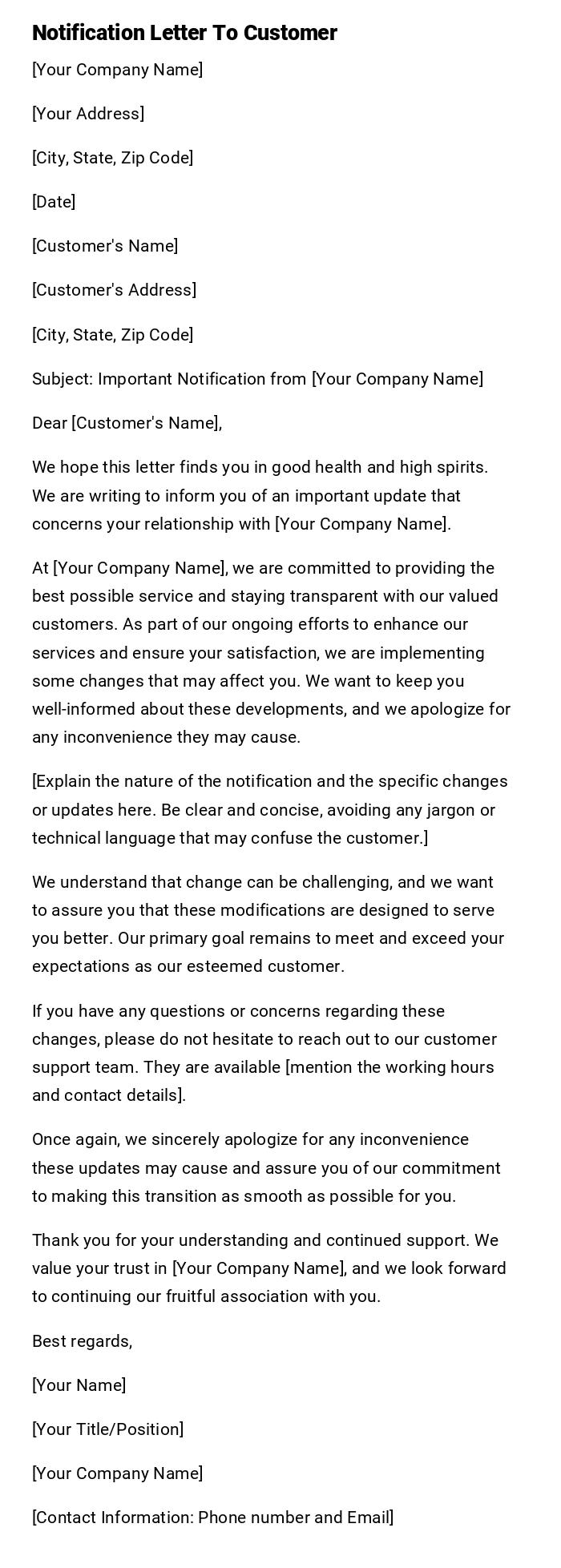
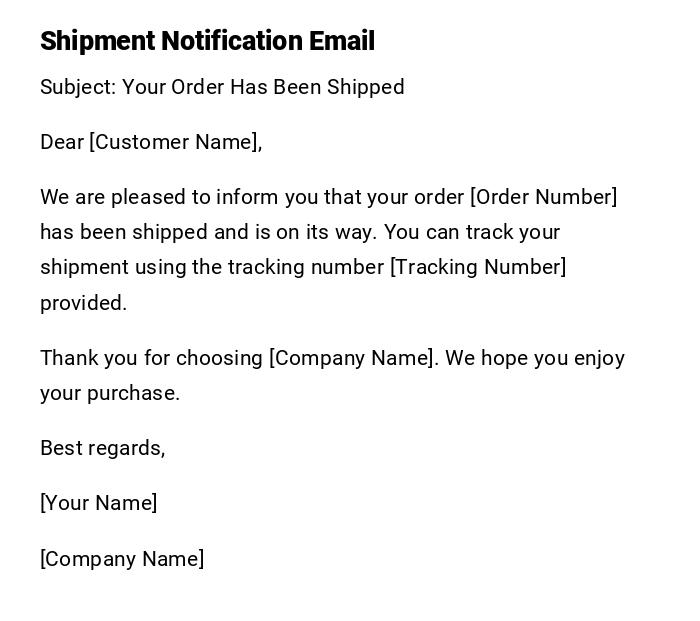
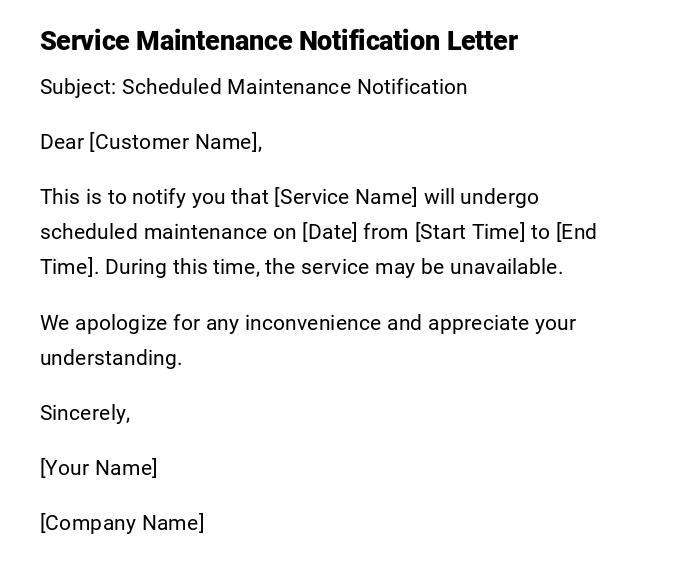
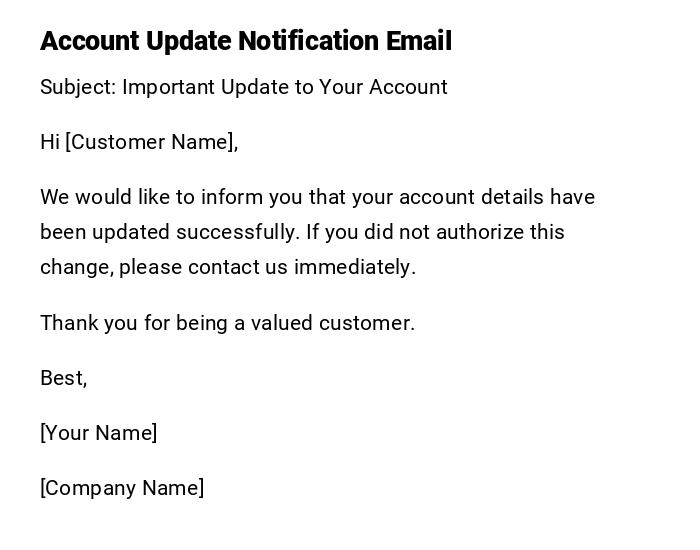
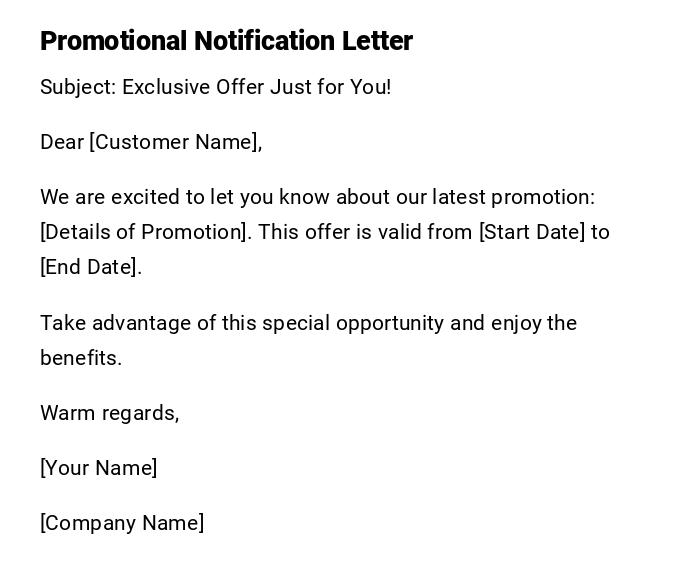
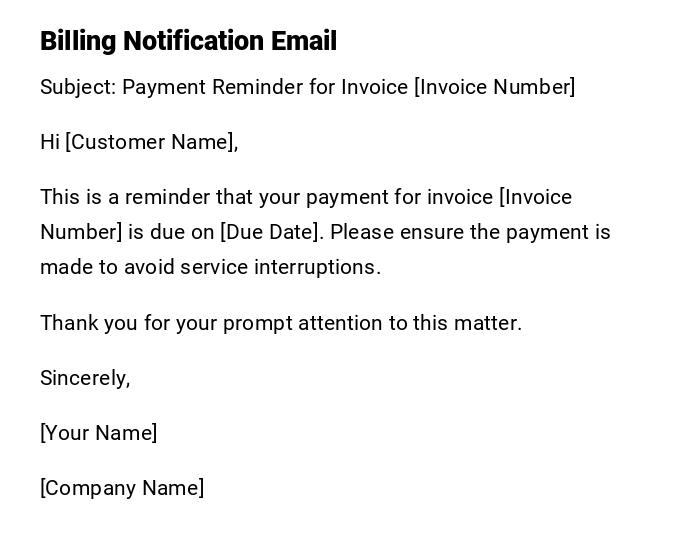

 Download Word Doc
Download Word Doc
 Download PDF
Download PDF